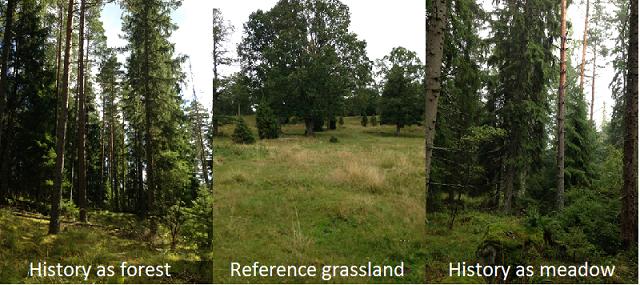Introduction
In Europe, a more intense agriculture and forestry during the last centuries has led to a drastic decrease in semi-natural grasslands. In Sweden there has been a 90% decrease of grasslands and several of these have been afforested. As a result a lot of grassland species are threatened. However, studies have shown that species may survive as remnant populations a long time after that their natural habitat has been destroyed or fragmented, which may be a result of an extinction debt. It has been showed that historical land use can in some cases be more important than present land use when determining plant species composition in an area. Therefore, this study will investigate the effect of land use history on the flora in coniferous production forests in southern Sweden by comparing forest with a history as either meadow or forest in the 1870s, using the flora of traditionally managed semi-natural grasslands as reference. Additional plant data from clear-cuts with history as either meadow or forest 1870s to compare with data from this study were obtained from Jonason et al. 2014.
Aims of the study
The overall aim of this study was to investigate if signs of grassland management could be found in coniferous production forests more than 80 years after the management has ceased. The more specific aims were 1) Investigate if land use history has any effect on the plant communities in forests. 2) Compare forest and clear-cuts with different land use history with reference grasslands regarding species composition 3) and investigate if patterns can be explained by species traits. 4) Investigate if the result can be used to develop a conservation method in association with harvest, which take historical land use and its corresponding species diversity in consideration.

Responsible for this page:
Director of undergraduate studies Biology
Last updated:
05/18/15
